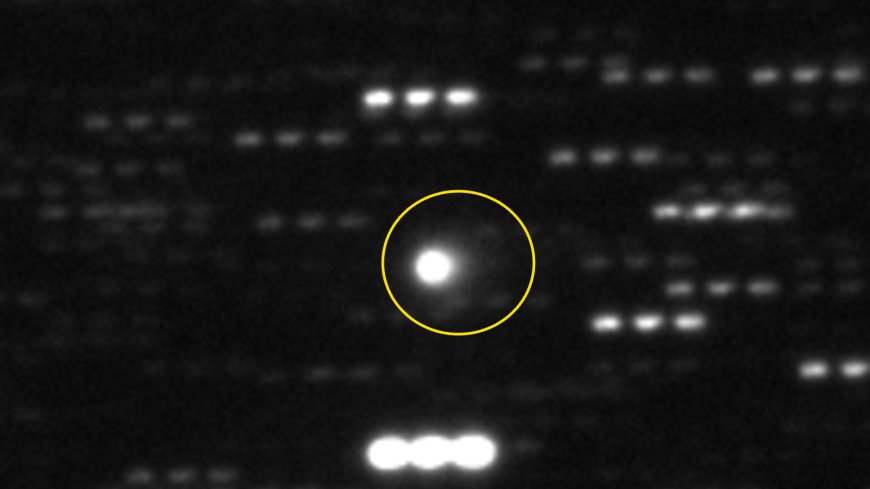3I/ATLAS: Largest Interstellar Object Ever Seen - New Photos Revealed
3I/ATLAS, an interstellar comet, is 7 miles wide, making it the largest interstellar object discovered. Photos from the Vera C. Rubin Observatory showcase its size and features, providing valuable insights for future research.

3I/ATLAS is an interstellar comet that is currently shooting toward the sun on a one-way trip through the solar system.
The alien comet 3I/ATLAS is roughly 7 miles (11.2 kilometers) wide, making it the largest interstellar object ever spotted, according to newly revealed photos from the Vera C. Rubin Observatory.
The detailed images, which were captured before the extrasolar entity was officially discovered, highlight the immense power of the record-breaking telescope and demonstrate how valuable it will be for finding future interstellar interlopers, researchers say.
3I/ATLAS was discovered on July 1, barrelling toward the sun at more than 130,000 mph (210,000 km/h). Less than 24 hours later, NASA had confirmed that it was the third known interstellar object (ISO) — an ejected piece of an alien star system that is shooting clean through our solar system. It quickly became clear that 3I/ATLAS was a comet, and computer simulations tracing back its likely region of origin hint that it could be up to 3 billion years older than Earth, potentially making it the oldest comet ever detected.
Until now, all researchers have been able to uncover about the comet's size was that its coma — the cloud of ice, dust and gas surrounding it — was up to 15 miles (24 km) across. However, the size of its icy nucleus, or outer shell, remained a mystery.
But in a new study, uploaded July 17 to the preprint server arXiv, a group of more than 200 researchers was able to find images of the comet in Vera C. Rubin's extensive early data set, revealing the nucleus's likely size.
The images, which were snapped on June 21, suggest that the comet's nucleus has a likely radius of around 3.5 miles — or a diameter of about 7 miles — with a margin of error equal to around 0.4 mile (0.7 km).
3I/ATLAS was discovered on July 1 in images captured by the Asteroid Terrestrial-impact Last Alert System (ATLAS).
Until now, only two other ISOs have ever been confirmed: 1I/'Oumuamua, an asteroid that was discovered in 2017; and 2I/Borisov, a comet spotted in 2019. Astronomers have, however, long suspected that many more ISOs have passed through the solar system undetected.
'Oumuamua is believed to be around 0.2 mile (0.4 km) wide, although its exact shape was unclear, while Comet Borisov has a nucleus roughly 0.6 mile (1 km) wide. This means that 3I/ATLAS is comfortably the largest ISO ever seen.
The new study has also given scientists a good look at the comet's coma and helped to identify large amounts of dust and water ice surrounding its nucleus. These additional findings are further evidence that 3I/ATLAS is a natural comet — not a disguised probe sent here by an advanced alien civilization, as some researchers have controversially proposed in recent weeks.
The Vera C. Rubin Observatory, located in the Chilean Andes, is equipped with the world's largest digital camera, which is about to begin a 10-year mission to scan the Southern Hemisphere's skies, known as the Legacy Survey of Space and Time (LSST). The telescope released its first images in June, revealing more than 10 million galaxies in unprecedented detail, and has already discovered thousands of new asteroids.
The fact that the newly released photos could determine 3I/ATLAS' size, 10 days before the object was discovered, is proof of what Vera C. Rubin will be able to accomplish when it is fully switched on later this year, the study team wrote.
What's Your Reaction?
 Like
0
Like
0
 Dislike
0
Dislike
0
 Love
0
Love
0
 Funny
0
Funny
0
 Angry
0
Angry
0
 Sad
0
Sad
0
 Wow
0
Wow
0

























































































































































































